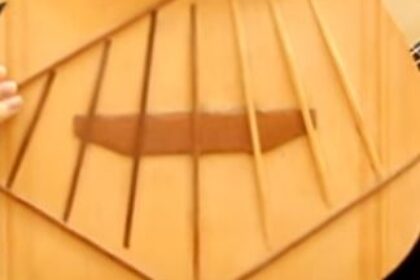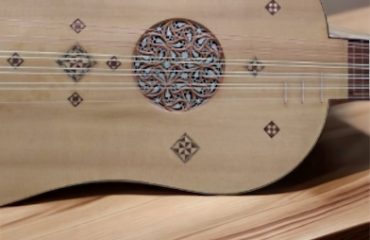Fan Bracing top vs Lattice Bracing top

Fan Bracing vs Lattice Bracing top
By luthier Marcus Dominelli, Victoria, BC, Canadá.
Fan Bracing top
Antonio de Torres (1817–1892) is generally given credit as the father of the modern classical guitar. He radically redesigned the instrument, giving it a larger body, lighter bracing, and a thinner soundboard than did his predecessors.
The bracing pattern is shown here, or slight variations of it, is the most widely used pattern in the classical guitar since the time of Torres. It is now commonplace, but 150 years ago it was truly revolutionary.
You can see from the picture how the braces are now running more in the direction of the soundboard grain, and not perpendicular to the grain like in the lute and many of the early 19th century guitars such as those made by Lacote.
This change in brace orientation is significant to the musician. Combined with the larger body and the thinner soundboard, fan bracing makes for a warmer, earthier sounding instrument with a much stronger bass response than the ladder braced guitars of the early 19th century. Simply put, Torres’ guitar had a greater dynamic range of tonal possibilities and was a more versatile tool for making music.
Lattice Bracing top

In the late 1970s, an Australian guitar maker named Greg Smallman popularized the lattice braced guitar. It was truly revolutionary, and his guitars to this day can be found in the hands of many of the world’s finest players. The basic physics behind how the lattice works is very simple:
Since a lattice structure is inherently stiff both with the grain and across it, the soundboard can be made much thinner and still be strong enough to withstand the string tension, thus substantially reducing the total weight of the top. The energy of the strings is more efficiently transmitted into soundboard vibration, the net result being a guitar with greater volume, and faster string response.
Another benefit of Lattice bracing is greater ease of playability and dynamics. By dynamics, I mean the ability of the guitar to respond to both aggressive and gentle right-hand techniques.
Playability is more than simply a function of adjusting string action at the nut and saddle. Although string height influences on playability, how the soundboard responds to every subtle nuance of the strings and hands is probably more important to the musician than action height alone.





